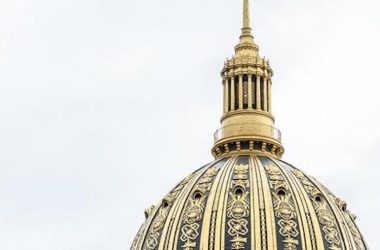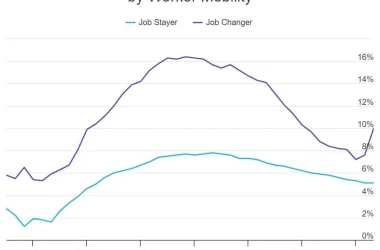By SARAH PLUMMER
The Register-Herald
CHARLESTON, W.Va. — For outgoing Commissioner of Tourism Amy Shuler Goodwin, marketing Wild, Wonderful West Virginia falls short because marketing dollars are spread out across government factions with no oversight or accountability.
“It is not working because we are shattered. We are shattered in state government and in our counties. We are very myopic in how we look at state government. Tourism is here. Culture and History is over here. It is all here, sitting right in front of our faces, but we say, ‘This is my division. This is my pot of money. That is what is wrong with how we are promoting Wild, Wonderful West Virginia,'” said said Monday, departing from her planned talking points before the West Virginia Legislature’s Joint Commission on Economic Development.
“The Division of Tourism is supposed to be the marketing arm, but we don’t talk to each other. We don’t coordinate with Tamarack. We don’t coordinate with State Parks or Culture and History.”
Goodwin stressed that marketing efforts across the board don’t send a coordinated message, and there is no one to measure the effectiveness of the divided campaigns.
Sen. Corey Palumbo, D-Kanawha, asked Goodwin “How much money are we spending on our advertising?”
“What I’m spending on your behalf is just shy of $7 million. What you all are spending out there through other divisions? I have no idea,” she said.
The Division of Tourism does not coordinate with other arms of the Department of Commerce, nor Division of Highways or State Parks, she said.
Palumbo asked if Goodwin had an idea of how much the state should be spending in all.
“How much do we need? Let’s put it this way: How much would we invest in a business coming in that would support 46,000 jobs and bring in $4.9 billion? How much would you give them to continue that work? Because that’s what we have,” she said.
But how much should be spent is only part of the question, Goodwin stressed. Part of any marketing coffer should be spent on solid research and measuring the return on investment.
“We need to require folks to show exactly what we are getting back from what we are putting out,” she said.
Over the last two-and-a-half years as commissioner of tourism, Goodwin halted all marketing campaigns, conducted research, trademarked “Wild, Wonderful West Virginia,” and built back up a refreshed vision for the state’s marketing campaigns.
The tourism arm has also implemented technology to manage marketing files and tools online and make them readily assessable to other divisions as well as track how media exposure in specific locations turned into visits. They also monitor which marketing venues provide the most verified visits.
She said her staff can follow marketing money from television ads placed in a specific city to tourism visits and those guests’ activities in West Virginia.
But the greatest gains over the last couple years have been in changing how those outside the state view West Virginia.
West Virginia is known for its sports and recreation, beautiful scenery and affordability, but prospective visitors don’t believe the state has important landmarks, live theater, great dining choices or a nightlife.
While Goodwin says there is still much work to be done, 2016 advertising has increased West Virginia’s perception as a family destination by 19 points over 2014 advertising numbers.
There was an 18 point increase in those who view the state as “luxurious,” a 15 point increase in those who saw West Virginia as a “popular” destination and an 18 point increase in the state as a destination for “entertainment.”
The 2016 West Virginia Image and Advertising Accountability Research report conducted by Longwoods International measured the “halo effect” of advertising for the first time — the link between tourism advertising and economic development image ratings.
This halo effect has raised West Virginia’s image as “a good place to live,” “a good place to start a career,” “a good place to retire,” and “a good place to attend college.”
Goodwin said many focus solely on the marketing’s Return on Investment, which was 7-to-1 in 2014 and is 14-to-1 in 2016, but those numbers will fluctuate based on gas prices and other external forces. The important thing remains how West Virginia’s image has changed.
“If this is a marathon instead of a sprint — and I think it is — tourism is going to be the thing we have left at the end of the day. We will have very little else,” she said. “Everyone thinks, tourism, we are the fun people. We are not. We are the money people … and now we are going to be the meat and potatoes people. Nothing is more critical than how we represent ourselves to our neighbors and to the world,” she concluded.
• • •
Echoing Goodwin’s call for a coordinated marketing effort, Mary Margaret Layne, who has spent 40 years in arts and tourism in the Huntington area, urged legislators to combine and market historical and cultural assets across the state to cultural tourists.
Cultural tourists, she said, spend 60 percent more than other leisure travelers, and are looking for historic sites, historic landmarks, art performances and museums.
In 2010, Layne said she was part of a National Heritage Preservation project through Huntington Museum of Art and WVU Libraries to identify all cultural and historical areas of significance.
She said 230 sites, including historic homes, Civil War collections, artist’s studios and more were identified.
“We need to coordinate, package and market those treasures statewide. We need to look at them from a statewide perspective because one historic house standing on its own is not a tourist destination. It doesn’t make sense, unless you are a rabid Pearl S. Buck fan, to go to one historic home. What makes sense are driving tours, regions that offer several reasons to visit,” she said.
Layne noted that art towns like Lewisburg and Princeton can’t be overlooked, and southern West Virginia has a rich African American history that is often ignored.
She is involved in developing a tourism corridor between the Ohio River to southern West Virginia where the Hatfields and McCoys Trail begins, which could become a model for tourism corridors that are anchored to cities that have restaurants, craft beer and the amenities that travelers desire.
“We must let go of traditional modes of thinking about what industry is in our state. Manufacturing is critical. We all know that, but it is one industry sector. If we are going to grow our economy, we are going to have to grow it in multiples. It cannot just be one industry we are focusing on,” she said.
See more from The Register-Herald




